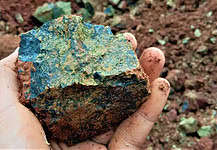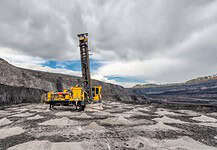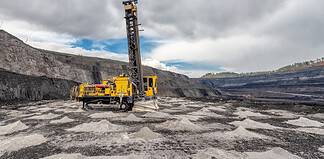BHP vessels near Port Coloso in Chile. Image: BHP.
BY ELIZABETH FABRI
BHP has begun trialling drones across its ocean freight operations in an effort to increase safety and efficiencies for the business.
The global mining giant has been using drone technology for years across its iron ore mines in the Pilbara, Olympic Dam site in South Australia and coal operations in QLD to help measure stockpiles, and avoid working at height.
The trial across it ocean freight division will see it play a key role in a tablet-based technology package, which incorporates artificial intelligence (AI) to provide a “digital view” of the ship.
BHP Marketing Freight vice president Rashpal Bhatti said all of the company’s chartered ships received a tablet when they berth, and on the tablet they could read the tension of the mooring line, which has major safety benefits.
“The question now is can the same tablet become a holistic technological package by also delivering ship hold inspection data, draft readings and other critical information captured by drones,” Mr Bhatti said.
“It’s all a bit futuristic but that is the direction we are going.”
Mr Bhatti said marine drones could be programmed to complete a variety of specific tasks, including the inspection of holds; which would reduce the task time from one hour to 15 minutes.
“The hold inspection process involves ships which have five to nine holds which a person checks by climbing down ladders,” Mr Bhatti said.
“The inspector has to be physically fit, use fall protection, and carry a parrot (oxygen meter) to make sure there is enough air in the hold.
“With drones, we can fly them into a hold and capture 4K images, but also infra-red, and other types of cameras that can show cracks or other specific parameters that cannot be seen with the naked eye.’
“There are basically three or four types of ships with hold sizes about the same. So once you program a drone to go in to a certain ship, it can become an autonomous process.’’
“So you have a better way to assess the condition of the hold, and you are removing a person from a potentially hazardous situation.”
Drones were also being tested to improve ship draft readings, which was usually done from a boat when the ship was berthed and ready for a cargo.
“We are working with ship owners on this and other ways to use technology to improve safety and productivity,’’ Mr Bhatti said.









































